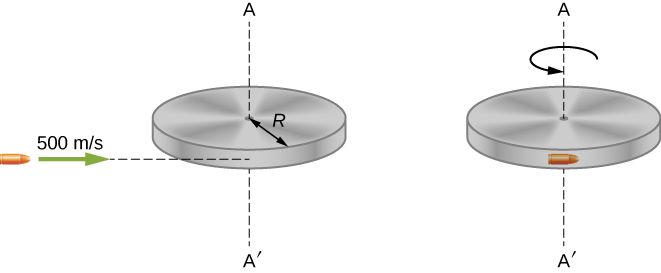| << Chapter < Page | Chapter >> Page > |

The moment of inertia of the system with the bullet embedded in the disk is
The final angular momentum of the system is
Thus, by conservation of angular momentum, and
Solving for
What is the purpose of the small propeller at the back of a helicopter that rotates in the plane perpendicular to the large propeller?
Without the small propeller, the body of the helicopter would rotate in the opposite sense to the large propeller in order to conserve angular momentum. The small propeller exerts a thrust at a distance R from the center of mass of the aircraft to prevent this from happening.
Suppose a child walks from the outer edge of a rotating merry-go-round to the inside. Does the angular velocity of the merry-go-round increase, decrease, or remain the same? Explain your answer. Assume the merry-go-round is spinning without friction.

Notification Switch
Would you like to follow the 'University physics volume 1' conversation and receive update notifications?